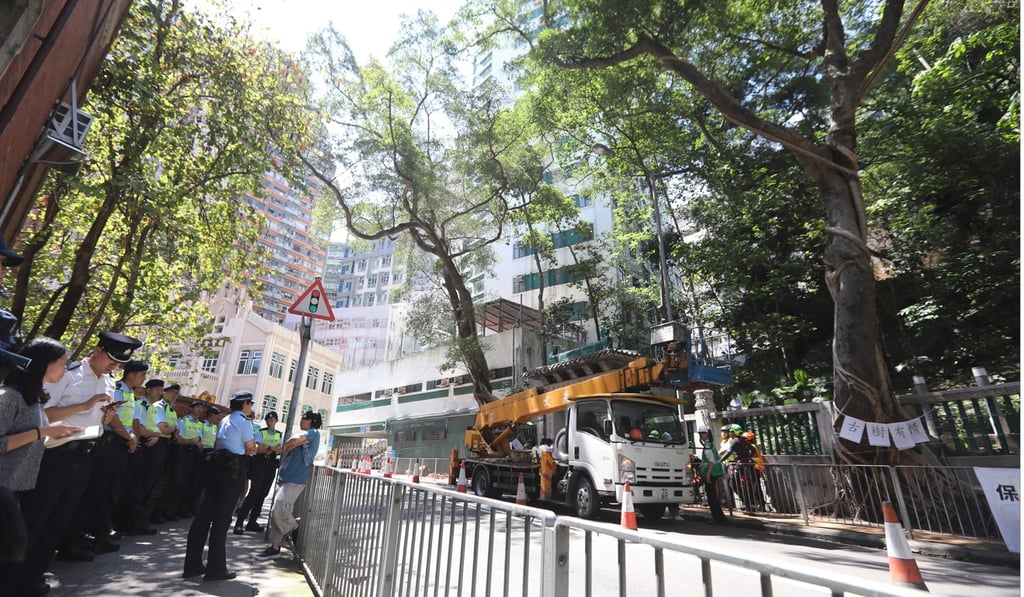Could Hong Kong’s 80-year-old banyan trees on Bonham Road have been spared the axe?
Experts continue to question move to cut down two ‘stone wall’ trees due to safety risks

The debate continues to rage over two 80-year-old banyan trees in Hong Kong’s Central and Western District, even after they were cut down in a 12-hour operation that began on Sunday and ended at about 4am on Monday.
Only the buttress roots, covered with black plastic bags, remained of the two large “stone wall trees” on Bonham Road.
A Lands Department report earlier said the trees had been found to have cavities, with one showing signs of decay and another exhibiting a fungal infection, causing a safety hazard.

“The government is developing a ‘smart city’, but why, when there’s a scientific tool on the market that can be used to measure the trees’ condition, did the government not use it?” Chinese University of Hong Kong professor and tree expert Chiu Siu-wai asked on a radio show on Monday.